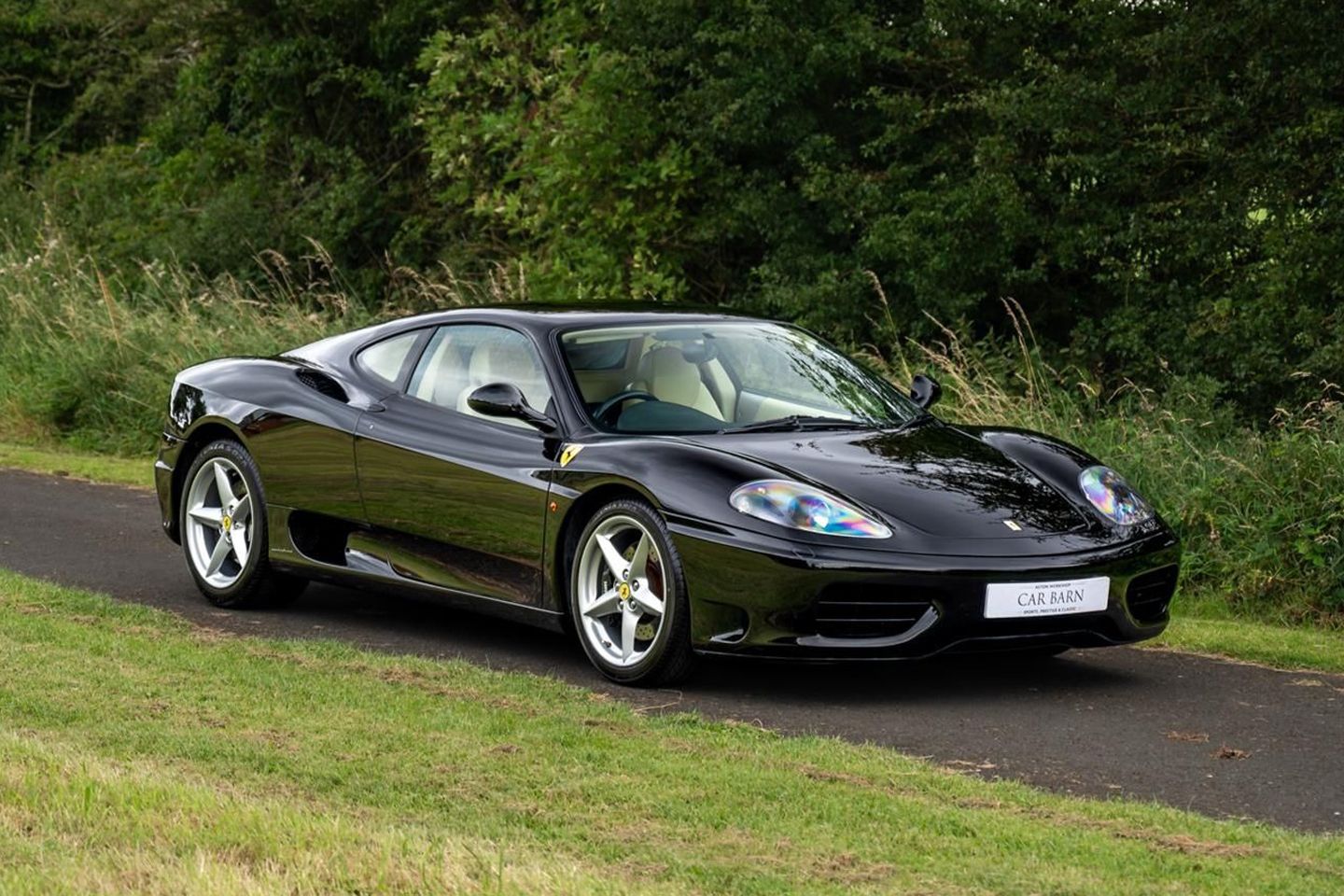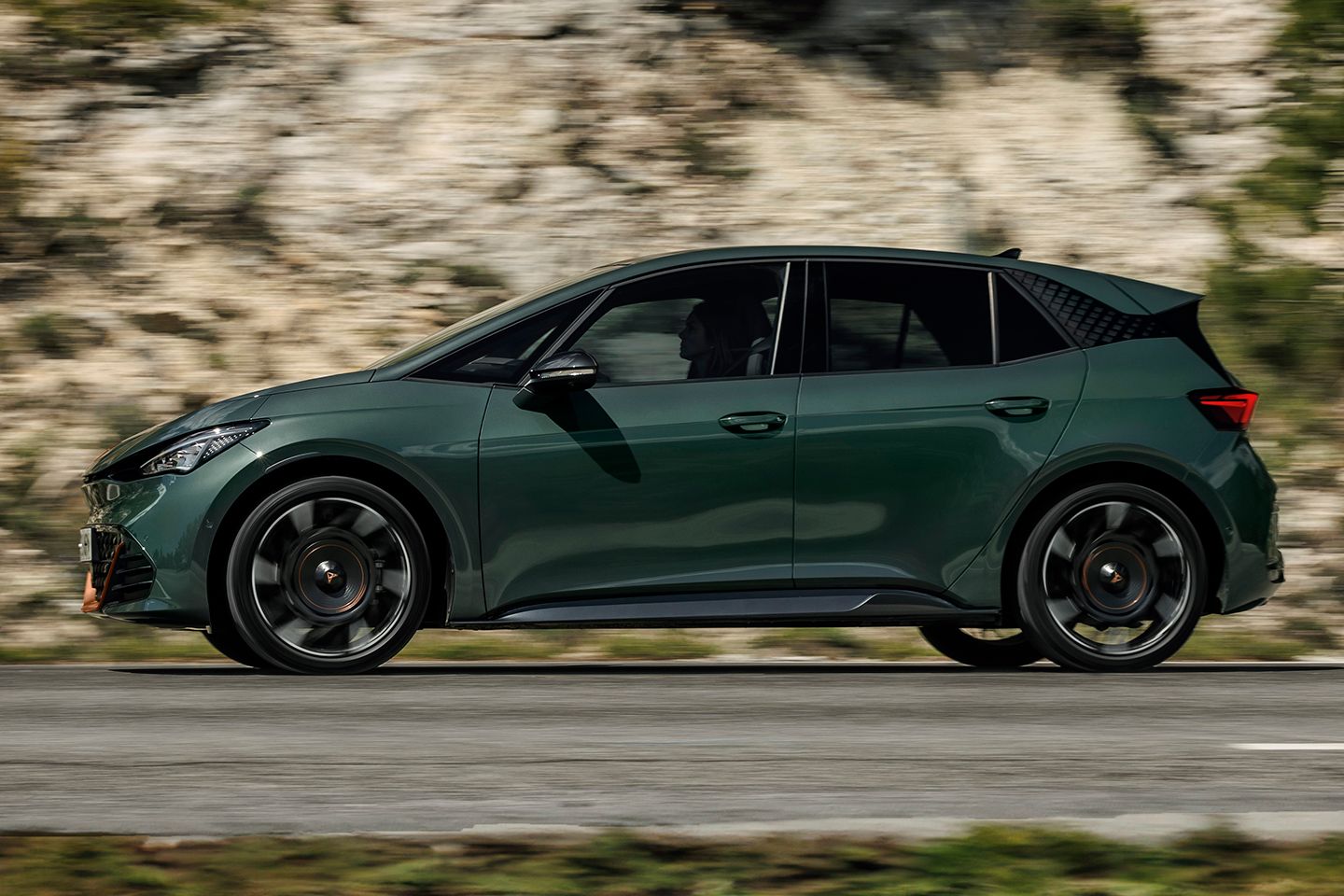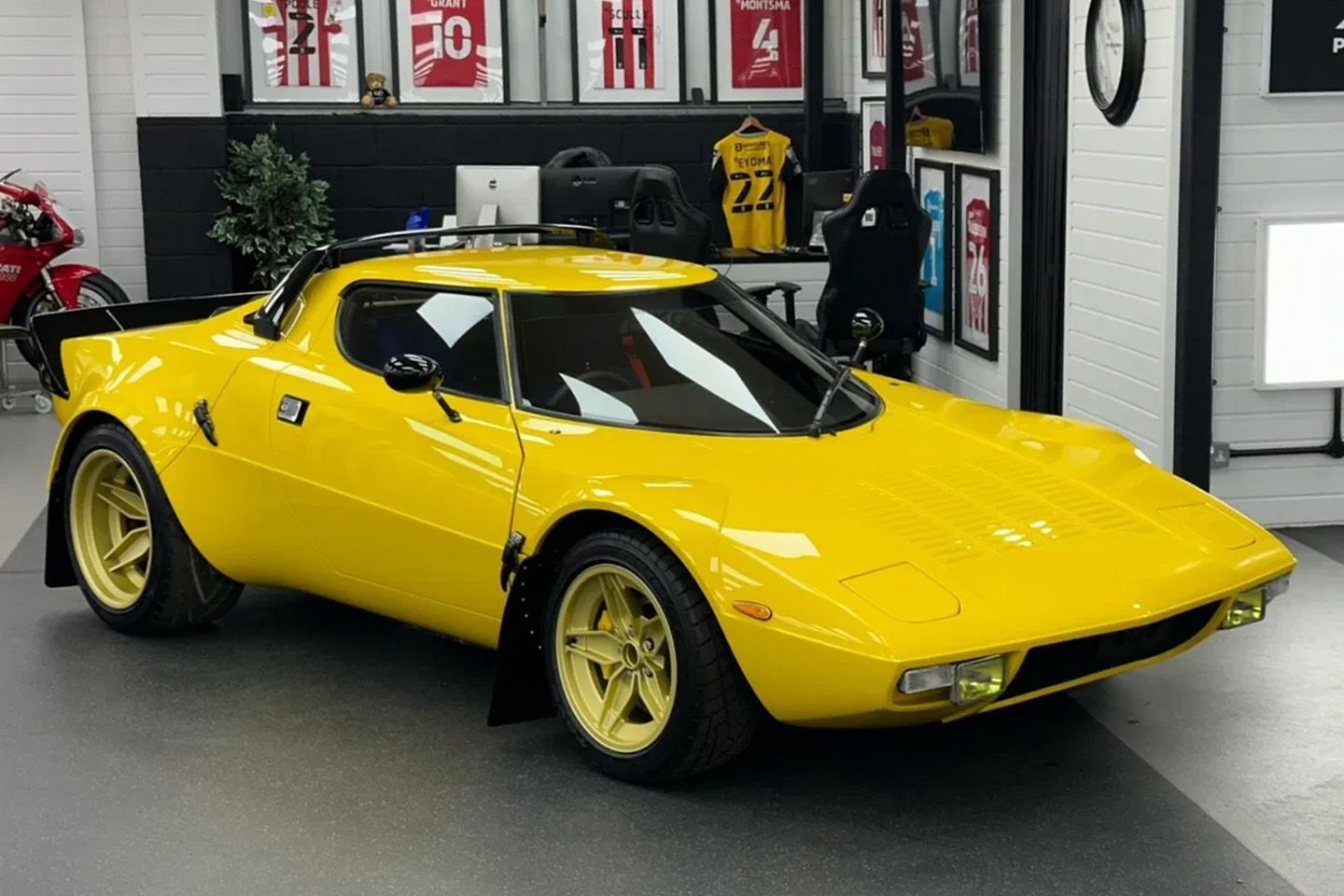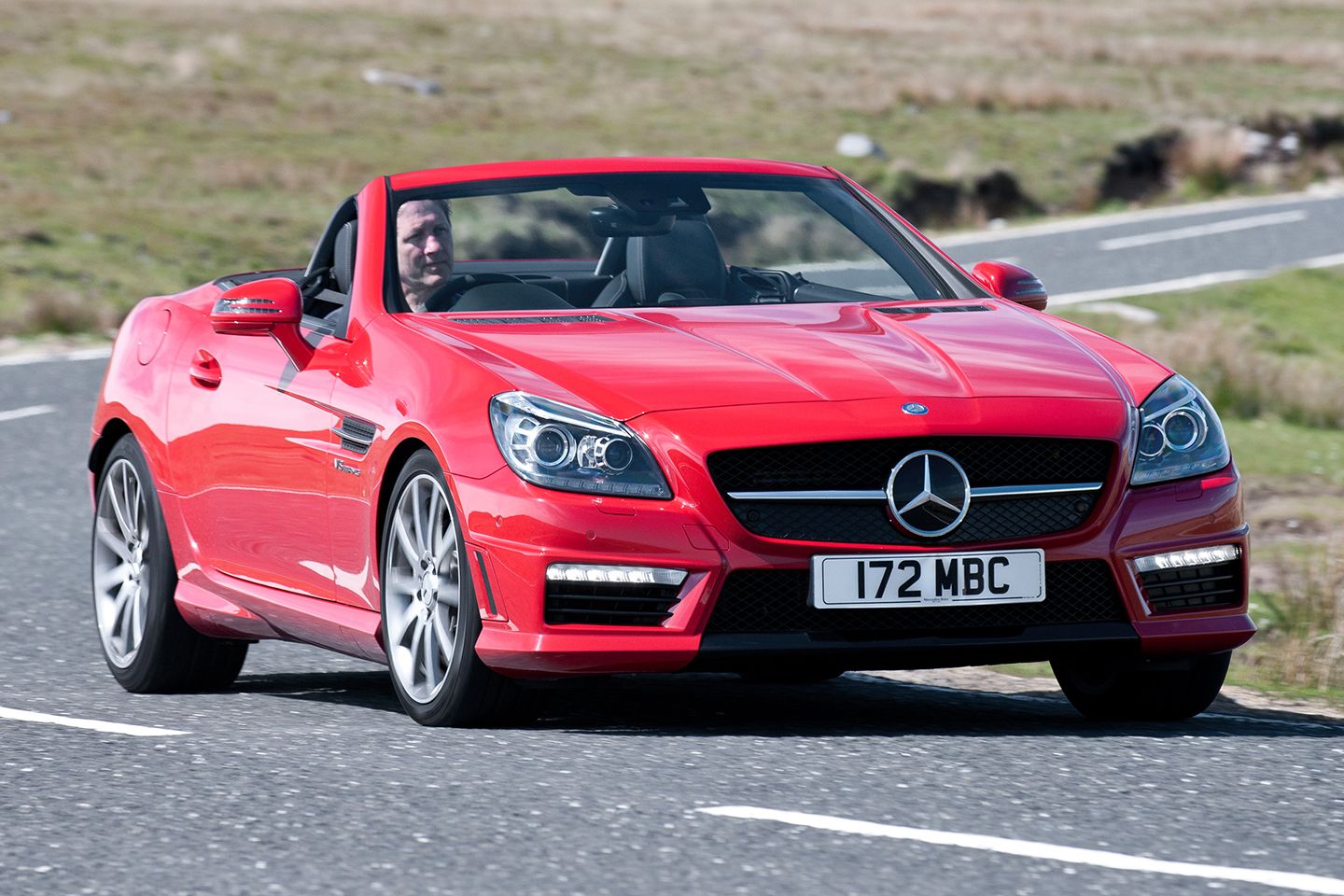
Key considerations
- Available for £19,000
- 5.5-litre naturally aspirated petrol V8, rear-wheel drive
- 421hp, 398lb ft, 33mpg (NEDC) and a mid-4-sec 0-62mph time
- Small and wieldy but not the most rigid car on bumpy roads
- Dynamically loses out to the Boxster but trumps it on character
- Mini-SLS styling and good build quality make it a hidden gem
Always fancied a proper Mercedes-AMG V8 but frightened by the prices? Fear not: there’s a naturally aspirated V8 AMG that you can buy for under £7,500. That would be the 2004-on R171 model SLK 55 with the 5.4-litre M113 V8 – but we’re not concentrating on that car in this buying guide. Instead we’re investigating its successor, the short-lived 2012-15 R172 with the 5.5-litre M152 V8.
The first R170 SLK of 1996 generated a veritable tsunami of buyers, lots of them female. Its USP was a whizz-bang folding steel hardtop. The weight and complexity of that roof didn’t bring many benefits in rigidity, however, and the supercharged four-pot engine wasn’t really up to the task of moving the whole plot along at a sporty pace, but those minor details didn’t stop those at the top of the order list from making a quick profit on resale.
The arrival in 2000 of the IHI-supercharged V6 SLK 32 AMG didn’t entirely stifle the grumbles from speed freaks, but the 2004-on R171 pretty much did when it was announced in SLK 55 form at the 2004 Geneva show with an M113 5.4-litre V8 jammed under its bonnet. In the SLR McLaren with a supercharger attached the M113 engine became the mighty 617hp M155, but even in naturally aspirated guise for the R171 SLK 55 the M113 produced a respectable 360hp/376lb ft, more than enough to duff up a Porsche Boxster or a BMW Z4M – in a straight line at least. Even with 1,540kg to lug around the Merc did the 0-62mph run in 4.9sec and topped out at 155mph. It wasn’t great on the bumpy corners which were in abundance in the UK, but it was a good boulevardier’s car.

A Black Series SLK 55 came out in 2006. This was substantially different to the regular SLK. For a start, it was a coupe rather than a convertible, with carbon fibre used for the fixed roof and for many other parts throughout the car. Shorn of the heavy lifting mechanism the Black’s weight dropped to 1,495kg. The engine was still the M113 5.4 V8, but power and torque were increased to 400hp and 384lb ft resulting in a new 0-62mph time of 4.5sec and a new top speed of 174mph.
The final revision for the standard R171 SLK 55 came in 2008 with a Euro-emissions-friendly remap, faster software for the 7-speed auto gearbox and an updated interior with a new steering wheel and a new centre display with lap timing. It still weighed too much though and it still drank too much petrol at 23.4mpg combined.
It felt like a missed opportunity, so there was much hand-rubbing anticipation when the third-gen R172 SLK was announced in 2012 featuring Mercedes’s M152 5.5-litre V8, basically the same motor used to great effect in M-B’s 63-badged offerings (CLS, E, S, CL) but without the twin turbos.
In English, SLK (Sportlich Leicht Kurz) would have been SLS (Sporty Lightweight Short). That’s a different, somewhat longer and considerably more expensive AMG Mercedes, but you had to admit that Mercedes did succeed in giving the R172 SLK a mini-SLS look. As was the way of things the new SLK was heavier than the old one, but as compensation for that the power was well up at 421hp and so was the torque at just short of 400lb ft. The official average fuel consumption was considerably improved too at over 33mpg thanks in no small measure to the new cylinder management system that we’ll talk about a little more in the next section. The R171 Black Series was 0.1sec quicker than the R172 over the 0-62mph run but that was a specialist car that you will struggle to find on the used market at affordable money, or at all. We couldn’t find any at the time of writing.

Various packages were available for the new SLK 55 like Driver Assistance with Distronic adaptive cruise, lane assist and blind spot monitoring, or a Handling Package that included a mechanical limited slip differential, adaptive dampers and better brakes, but the P30 Performance Package was the one to have, adding more good stuff to the Handling Package like a flattened top and bottom Performance steering wheel in leather (sometimes with Alcantara grip sections) and Nappa leather seats. We believe that the P30 pack also increased the top speed from 155mph to 170mph. It might not have been the only official way to achieve that delimit, but trying to pluck definitive answers out of a welter of varying thoughts on this matter is not easy. Anyway, none of these packs were commonly added to UK cars.
The last V8 SLK 55 was finally overthrown in 2015 by the equally fast 3.0 twin-turbo V6 SLC 43, which was itself discontinued after the 2020 model year. There’s no likelihood of any more Kurz convertibles coming out with big non-turbo V8s, or any V8s come to that, so the R172 is your last chance to grab yourself a slice of AMG thunder.
The only problem is that there aren’t many of them about. It’s thought that fewer than 3,500 SLK 55 AMGs were produced, the last UK ones being registered in early 2016. In 2020 the entry price for a decent secondhand example was £25k. At the time of writing in mid-2024 you could pick up a 58,000-mile 2012 car for £19k. Will they get much cheaper? Hmm.
SPECIFICATION | MERCEDES SLK 55 AMG (R172 2012-16)
Engine: 5,461cc V8
Transmission: 7-speed auto, rear-wheel drive
Power (hp): 421@6,800rpm
Torque (lb ft): 398@4,500rpm
0-62mph (secs): 4.6
Top speed (mph): 155 (170 with Driver’s Package)
Weight (kg): 1,610
MPG (official combined): 33.6
CO2 (g/km): 195
Wheels (in): 18
Tyres: 235/40 (f), 255/35 (r)
On sale: 2012 – 2015
Price new: £55,000
Price now: from £19,000
Note for reference: car weight and power data are hard to pin down with absolute certainty. For consistency, we use the same source for all our guides. We hope the data we use is right more often than it’s wrong. Our advice is to treat it as relative rather than definitive.
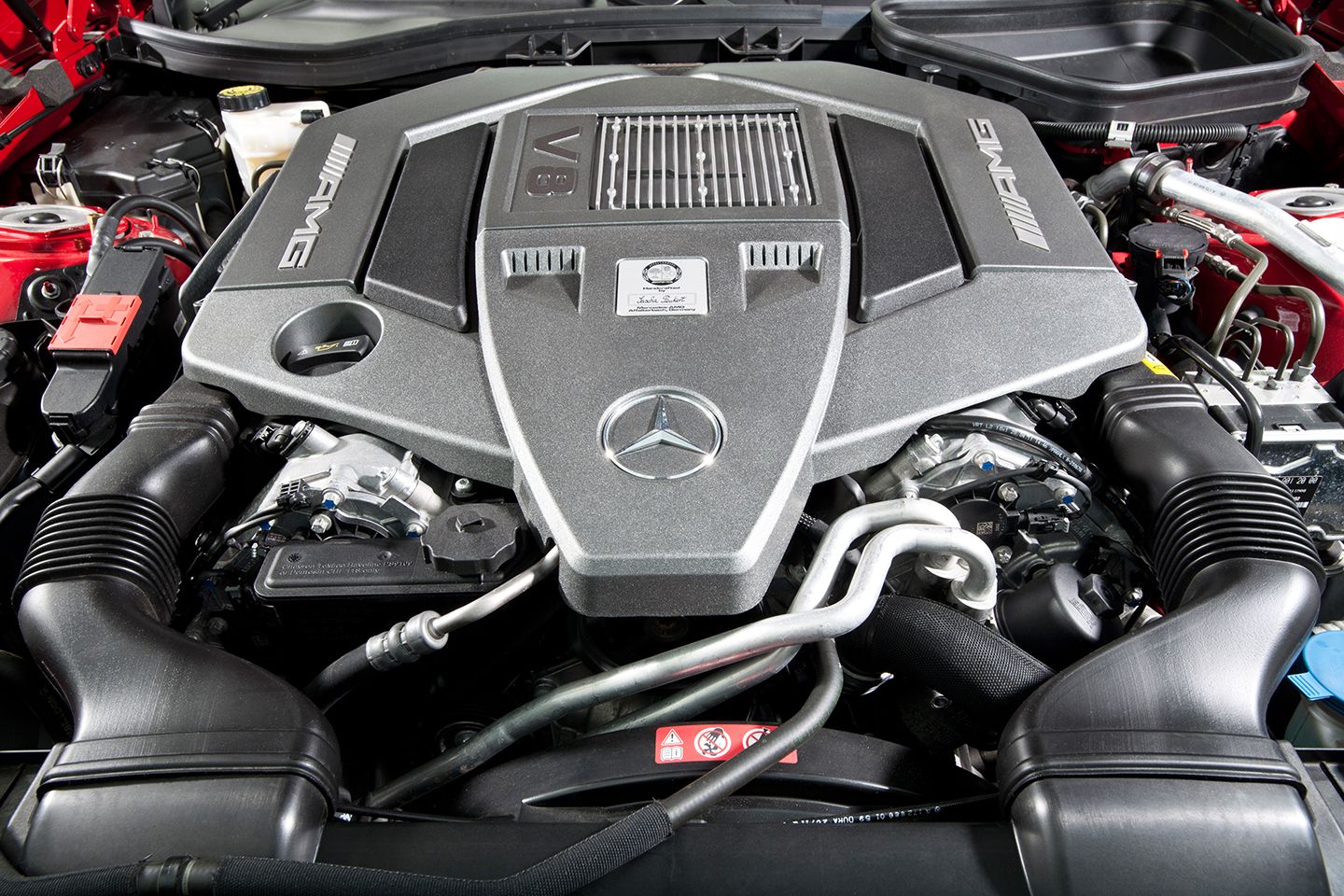
ENGINE & GEARBOX
The M152 engine that powered the SLK 55 didn’t appear in any other Mercedes. If you didn’t count the fact that it was essentially the naturally-aspirated version of the M157 biturbo unit that had been around since 2010, its production lifespan was just three years.
It was an all-aluminium engine, making it very light. There was lots of bottom end and mid-range push. It revved to 7,200rpm but that was a redundant exercise as neither the acceleration or the noise noticeably improved with revs: you only needed 4,500rpm on the tacho to get the maximum torque of nearly 400lb ft. In C (Controlled Efficiency) mode there was start-stop and, on partial loads between 800rpm and 3,600rpm, cylinders two, three, five and eight were deactivated for planet-saving purposes. Even with just the four cylinders running you had 170lb ft to play with.
AMG V8s have a unique throb and growl. The one on the R172 SLK 55 throbbed and growled through a valved sports exhaust with two chromed twin tailpipes. Some who had had both R172 and R171 versions of the SLK 55 thought that the standard R172 was more everyday/commuter-friendly than an R171 with an x-pipe. That’s shorthand for ‘not as noisy’. You could get an x-pipe for the R172 but the noise quality improvement wasn’t as obvious as it had been on the R171 engine, which hadn’t been contractually obliged to sound good on four cylinders as well as on eight. One or both of the exhaust valve motors could fail on the R172 system, resulting in a ticking sound on idle caused by the good valve trying to get in sync with the duff one.
The only manual gearbox available in the SLK range was attached to the slightly less exciting 184hp SLK 200 engine. To some, the R172’s Speedshift Plus 7G-Tronic torque converter seemed a bit slow compared to more modern twin-clutch transmissions, but it was smooth and well-matched to the engine and it did give you a nice blip on downshifts. That didn’t happen on the R171.
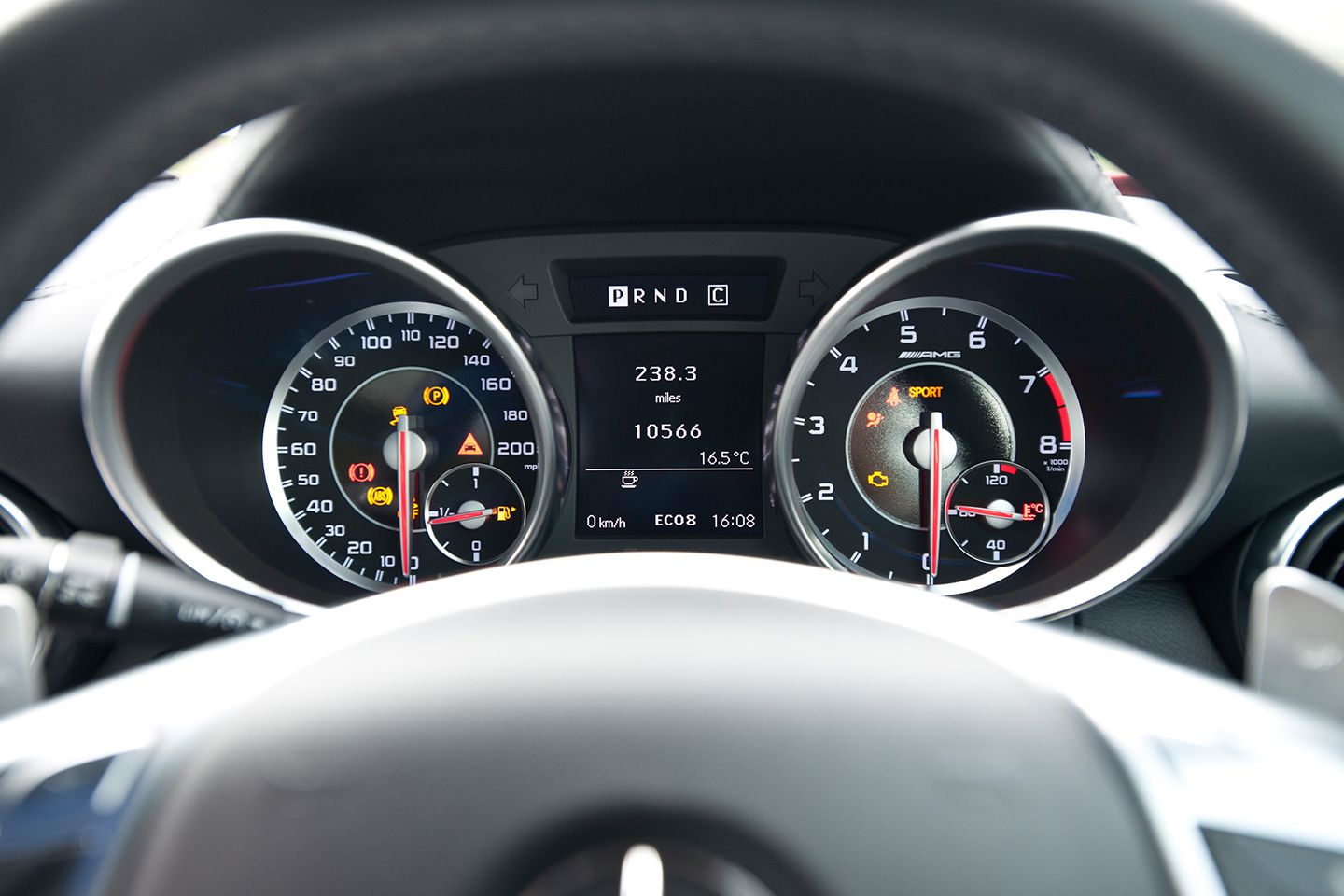
Being a direct injection design the M152 was not immune to carbon buildup on the intake valves. To stop valves getting gummed up the usual recommendation was to fire crushed walnut shells or similar through the top end every 60-80,000 miles. That wouldn’t fix leaky M152 injectors or wonky high-pressure fuel pumps, both potential weak points. The odd internet type will tell you that the M152 timing chain could stretch and that oil could leak from its front and rear main seals, valve covers, sump and timing cover gasket, but we’ve not been able to find much evidence to back up those assertions. With luck some owners will come onto the forum and give us the benefit of their experiences.
There has been at least one example of a cracked M152 piston crown, maybe resulting from a too-lean mixture caused by incorrect ignition and helped along by a micro-fracture or impurity in the piston’s manufacture. Overall though there’s no suggestion that the M152-engined SLKs are any more or less reliable than any other AMG engines of that era. Taking a glass half full view on it, given that these cars are all between eight and twelve years old it’s a fair assumption that any issues will have already been experienced and rectified on anything you might be thinking of buying. Time spent reading through the service history and receipts folder will be time well spent.
The official average economy figure of just under 34mpg was actually achievable. That was a very creditable number considering the performance that was on tap. The start-stop system could be inconsistent though.
On servicing, it’s not as bad as you might think. An independent specialist like Piper Performance will charge you £255 for an A service and £398 for a B.
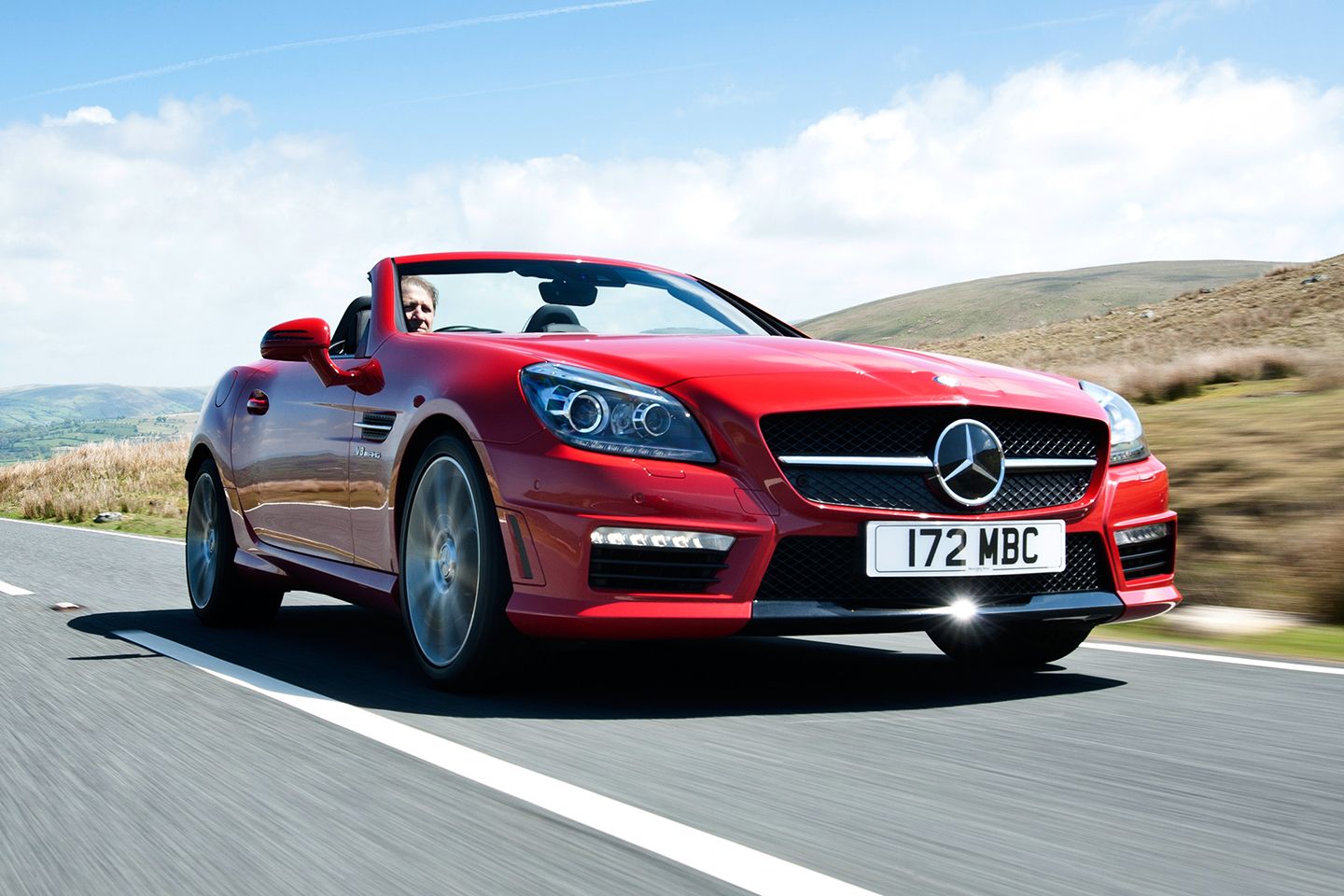
CHASSIS
The R172’s platform was an evolution of the R171’s rather than an all-new setup. Even with the weight-balancing effects of rear-wheel drive there was no getting away from the fact that there was a lot of bulk above the 55’s front wheels. Still, thanks to a more aggressive setting for the steering rack AMG did manage to make the front end surprisingly pointy. The back half of the car wasn’t quite so keen to join in the fun but by common consent the R172’s chassis was more ‘planted’ than the R171’s, whose stability control was still mainly on even after you thought you’d switched it off, killing off any prospect of power oversteer. The R172 55’s Sport mode did make a noticeable difference to the power delivery and handling feel.
The SLK 55 didn’t have Mercedes’s ABC (Active Body Control) electronically controlled hydropneumatic suspension, which was a relief when it came to maintenance. As standard though the ride comfort wasn’t stellar. With the Dynamic Handling Package (stiffer AMG Performance adaptive dampers, limited slip diff, 18-inch multispoke wheels, two-piece brake discs at the front, painted brake calipers) the ride was firmer but not intolerable. In any spec you couldn’t help but notice that the body control wasn’t class-leading. Road noise was on the loud side for any SLK that didn’t have the luxury of a V8 dominating the sound stage.
At 235 wide up front and 255 at the rear the tyres weren’t big. If you were making frequent use of the power you had to be prepared to change them on an equally frequent basis. From an outlet like Blackcircles, Michelin Pilot Sport 5 fronts will cost you around £125 each and rears will be £170 a go.
Ventilated steel brake discs were 360mm at the front and 330mm at the rear. Torque vectoring via the brakes was standard, as was three-mode stability control and AMG’s ‘Direct-Steer’ system, which sounds like something we’d all expect by default. In fact it was simply steering assistance that was even more speed-related than normal, with lots of help at low speeds for parking and not so much at higher speeds.
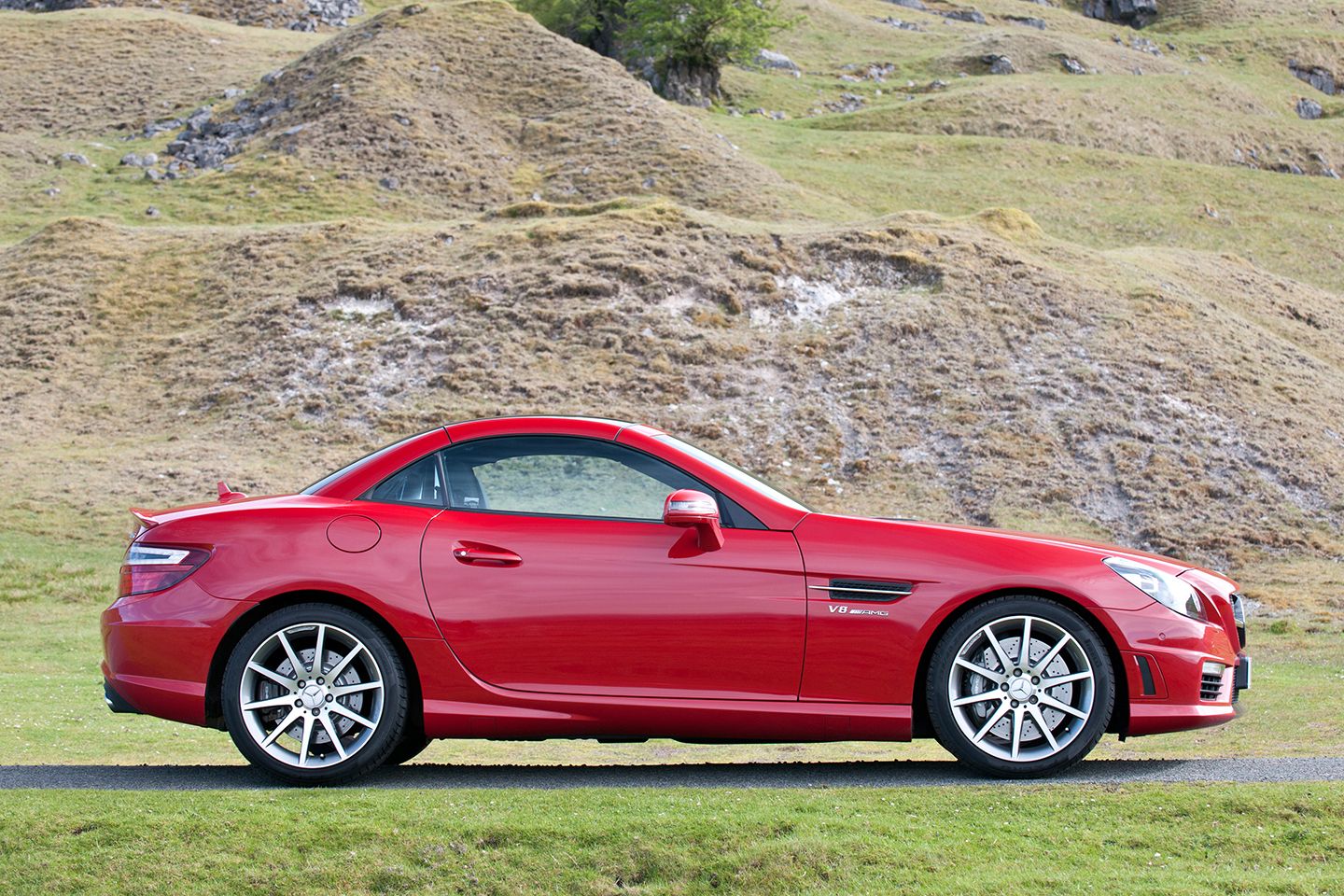
BODYWORK
The R172 SLK wasn’t physically large. In fact, it was only four inches longer than the Ford Fiesta. The front-end styling was intended to evoke that of the SLS, which in turn was meant to evoke the 1950s 300 SL. The SLK did achieve the goal of sportiness and elegance at the same time. The two-piece folding Vario Roof has always been the SLK’s star turn. For the R172 it had a new magnesium frame that was over 5kg lighter than the R171’s, marginally lowering the car’s centre of gravity. Roof deployment time was 20 seconds. From the factory that operation couldn’t be carried out while you were going along but we believe there’s an aftermarket module to sort that one out.
On pre-2013 model year cars you could have the Vario Roof in full metal. After that they were built with panoramic glass roof panels as standard, a headlining depriving you of the sky-viewing experience unless you paid the appropriate sum to have it removed. It appears however that M-B noticed owners were removing the headlining themselves to get a sunroof without paying for the privilege because at some point in 2014 or thereabouts they went back to solid roofs.
The ultimate roof option was the rather snazzy Magic Sky electrochromic ’smart glass’ panel for sun filtration that was controllable between fully transparent and heavily tinted. Some early glass roofs did develop cracks. Most varios developed creaks and rattles over time. The boot lid supported a lot of water in rainy weather and could dump quite a lot of that into the boot if you didn’t sweep it off before opening it. The box for Parktronic front and rear was commonly ticked by new buyers. If the rear sensors aren’t flush with the bumper that’s either because they’ve been aftermarket-retrofitted or the car has been in an accident and repaired with a non-sensored bumper.
These little cars look great in metallic white or Iridium Grey which takes on a goldish tinge when the sun hits it. Fire Opal red looked great too but 55s in that colour are very rare and it was a difficult one to repaint or touch up. Black cars with red seats was a good combo and one that’s easier to find.
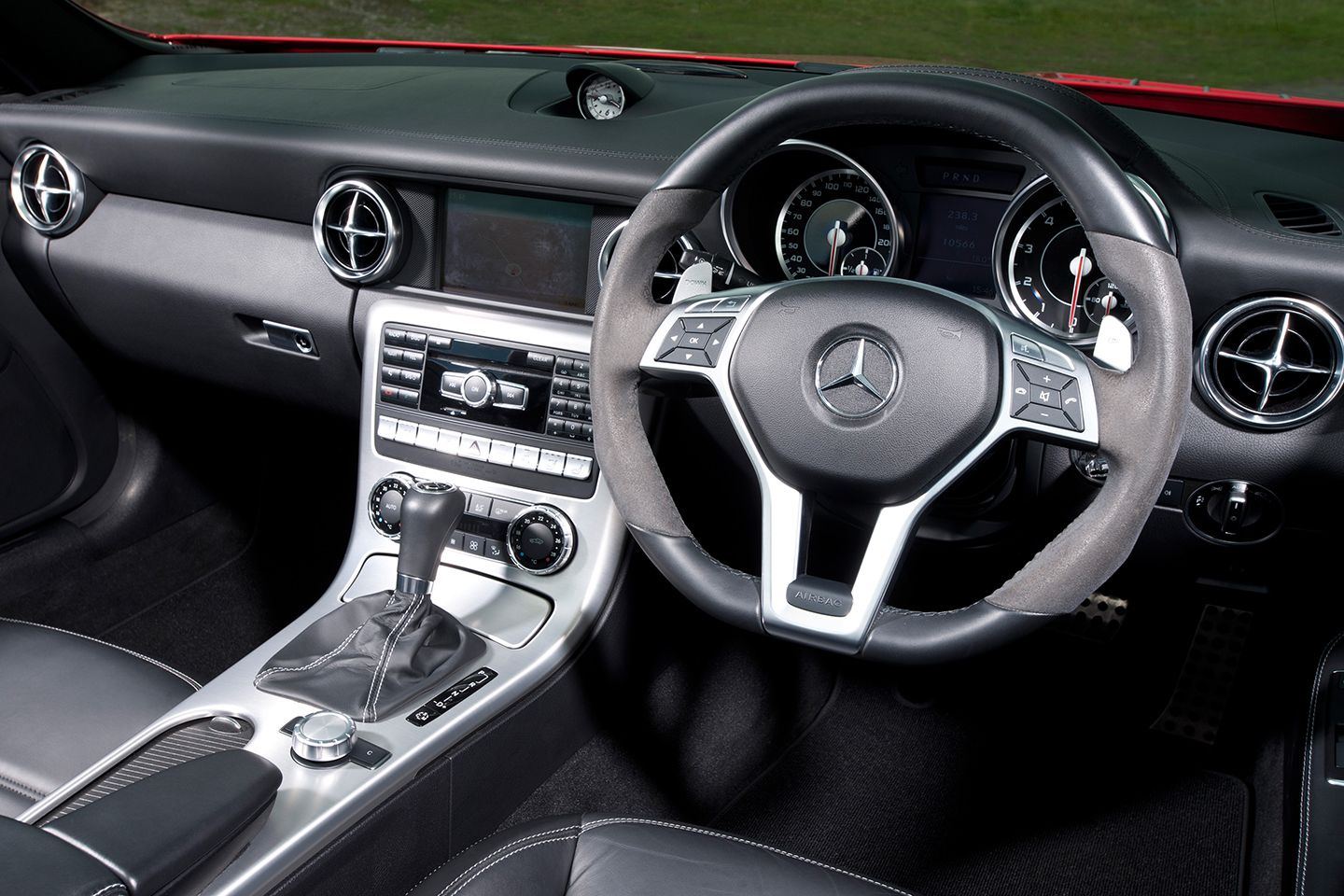
INTERIOR
There was another whiff of SLS about the new SLK’s interior. Red light strips lifted the ambience and the use of brushed aluminium for the centre console plus the turbine vents gave it a classy feel, but the IWC dashtop analogue clock looked a bit afterthoughty and you might be wondering why there wasn’t a bit more leather on view in a £50k-plus car. Porsche’s Boxster and Audi’s TT Roadster were more convincing in their premium-osity.
Although the R172 was still a small car, it was roomier than the R171 thanks to its extra cabin width. It felt better built and more luxurious than its predecessor too. The small infotainment screen dates it now, as does the selection of actual buttons scattered beneath it, but we don’t mind that in today’s brave new world of button-free infotainment systems which are an absolute pain to use. The effect of the Airscarf that blew warm air onto the back of your neck wasn’t that obvious unless you had the top up, which was when you didn’t really want it. Still, it’s probably worth having if you’re planning on doing a lot of top-down driving. Maybe it should have been a standard fitment but fortunately most SLKs you’ll see in the classifieds will have been optioned with it.
Another useful box for the first buyer to have ticked was the one for the Airguide wind deflector, pivoting transparent plastic wings which were attached to the back of the two rollover bars to reduce buffeting at speed. The downside of the SLK roof was the effect it had on boot usage when it was down. The actual amount of cargo space wasn’t too bad at 225 litres, or 335 litres with the top up (both figures larger than the R171’s) but having to access the R172’s boot through the narrow aperture that you were faced with when the top was down wasn’t ideal. The Boxster was better there. On the plus side there was some interior SLK storage behind the seats and in the between-the-seats cubby as well as in the oval space behind the gearshift lever.
Not all SLKs were specced with the upgraded Harman Kardon audio but that’s understandable and acceptable given that most buyers would have been more interested in the mechanical noise. Normal air-con was standard: you had to pay extra for climate control.
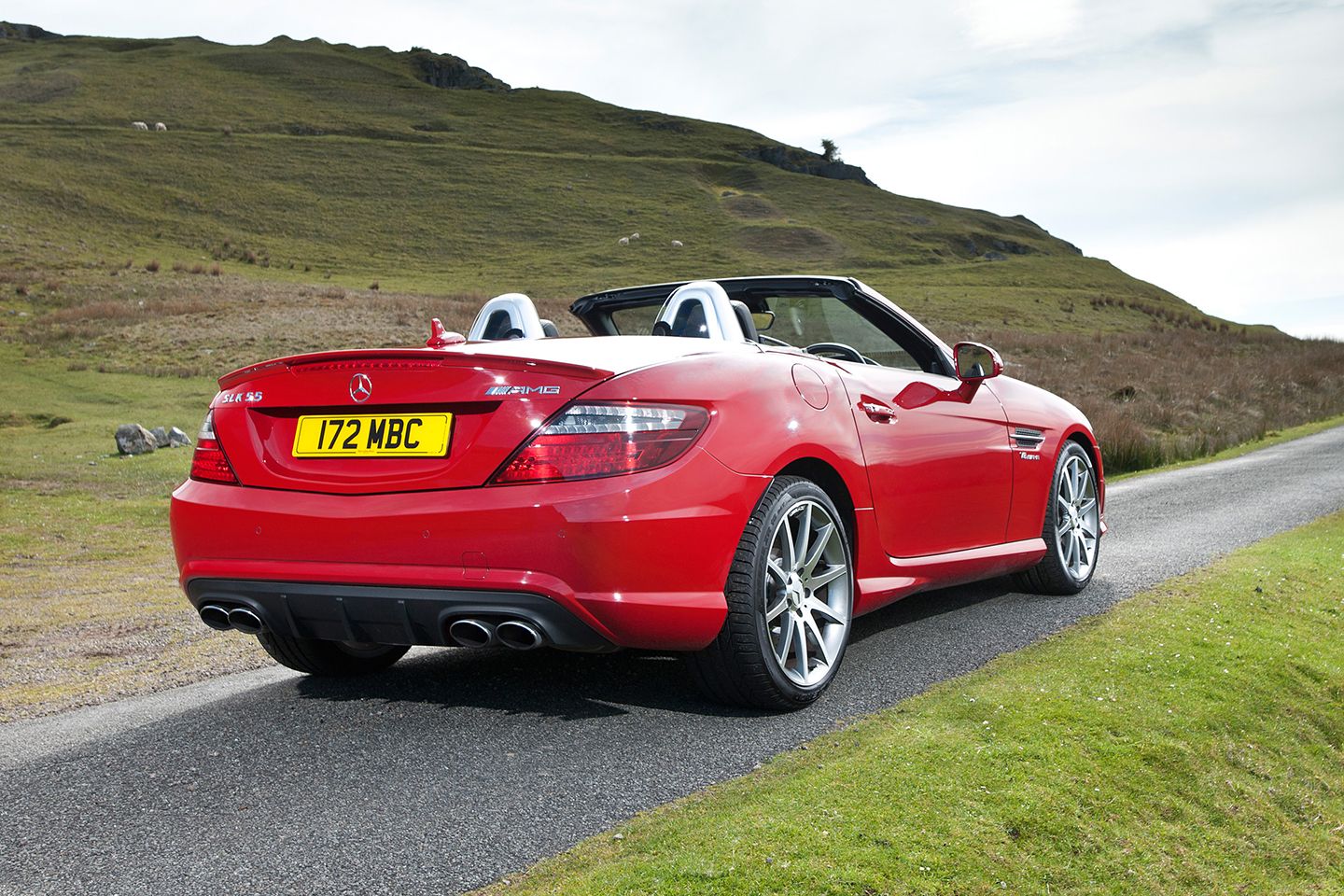
PH VERDICT
Rare, laugh-out-loud to drive, well built, quicker in a straight line and better equipped than a contemporary 981 Boxster S – what’s not to like about an R172 SLK 55? You tell us. Compared to the Boxster the Merc was more of a dragster than a ballet dancer, so it wasn’t as quick on a curvier road, and it certainly felt like an older car than the Porsche, but let’s be honest, how many chances do you really get to give any sort of car a full-on and NIP-free B-road blast these days? Not as many as you’ll get to give the SLK 55’s V8 motor a blare. And when you’re not caning it there’s a delicious pleasure to be had from its refined pootleability. The SLK 55 might not have matched up to the Boxster by most measurable standards, but it had shedloads of the stuff that you couldn’t measure – personality. All of them will have a Mercedes-AMG badge on the motor bearing the name of the bod who was most responsible for building it, and that’s a feelgood thing.
The newest R172 SLK 55 will be eight years old and the oldest will be twelve, but any of them should be modern enough to satisfy you in regards to driver aids and safety provision. Stuff like Neck-Pro crash-active head restraints and the surely only infrequently required drowsiness detection system were standard, and some cars will also have the Distronic proximity control and Pre-Safe autonomous braking options.
With good fuel consumption from its cylinder management system the Merc would be a cost-effective and most likely rather pleasant choice for an amble across Europe, where the roads are generally less bumpy and therefore less likely to expose the car’s jitteriness on poor surfaces. In untesting environments like that you’ll love it. If you’re looking at small roadsters with big V8 engines you could say that the R172’s only real rival is the R171 predecessor, which some believe has a better reputation for mechanical integrity. These can be picked up for less than £10k. Is the R172 worth twice that? Only you can decide.
The most affordable R172 on PH Classifieds in late July 2024 was this white 58,000-mile one-owner car from 2014 at £21,450. We have seen later cars for about the same money but they will have more than one owner’s name on the V5. Higher mileage (75k or thereabouts) cars registered as late as 2016 can be had for around £24,000, but if you’re happy with a mix of owners and miles here’s a 2013 car in silver with 58k at £21,475.

